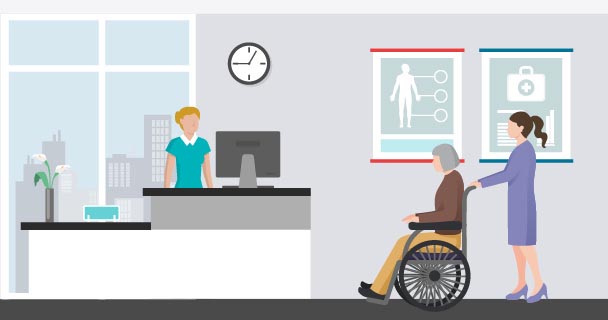blog


A number of situations and industry changes will continue to be big challenges for skilled nursing facilities (SNFs). Just a few of them include:
Solutions for SNFs Challenges
One study in particular found that nursing facilities can improve quality of care and reduce hospitalization of residents by increasing nurse staffing. They reported that nearly half of hospitalizations stem from social-structural issues at the nursing home, not clinical causes. They also found that if staff had been able to administer IV therapy, a whopping 70% of hospitalized patients could have been treated in the nursing home (The Henry J. Kaiser Family Foundation, October 2010). The bottom line is that nursing facilities cannot meet residents’ more complex health care needs if they are struggling with insufficient and inadequately trained staff. The more they take in higher acuity patients, the greater the challenge.
Changing How and What Care is Provided
Nursing facilities can provide more short term care for patients of all ages, as well as a greater range of care. There is an increased need for short-term care and rehabilitation such as physical therapy, occupational therapy, and speech therapy. It is crucial for organizations to become equipped to provide this type of care to keep their facilities full, especially as certified bed occupancy rates are going down. This may mean adding more nurse practitioners and physician assistants, as well as geriatric nurse practitioners and physicians.
Improve the Care Experience
Facilities can provide more comfortable, home-like settings for residents as well as more activities and events. Many organizations are also increasing their focus on individualized, resident-centered care. This can mean having residents participate in their care plans, and even provide input into the operation of the home. Some are also transitioning to hiring all-purpose workers who cook, clean, and help with daily activities.
Embracing Accountability is Key
Because of value-based payment models, hospitals have more at stake and will be holding post-acute-care providers more and more accountable. Post-acute providers have an important role to play, but they must be aggressive. There are several approaches facilities can take to work proactively with hospitals to help improve quality of care and reduce costs. They can start small with just one of these ideas, and then work to build up their efforts. One of the easiest things nursing facilities can do is share quality and patient satisfaction data, as well as materials on services provided. This helps hospitals understand the type of care that residents are receiving. They can also arm hospitals with specific information about how they are working to help reduce readmissions.
Really Become a Care Partner
There are also bigger steps nursing facilities can take, which usually require partnering with hospitals to some degree. Together they can form care-transition teams that work to improve and standardize discharge instructions, forms, and other communications. They can develop other teams who review problem cases and explore ways to prevent recurrences. Another idea is to work with hospitals to build a joint action plan on how to provide care for the most at-risk patients. The biggest thing skilled nursing facilities can do is to not ignore this issue. It is important to begin brainstorming ideas within their own walls about what makes their particular facility stand out from others, and then focus on those differentiators.
Contact HealthStream to speak to a solutions expert learn more about our courses related to Nursing Training.
HealthStream’s learning management system and healthcare training solutions support medical training initiatives and allow for the best patient care.
View All Learning & PerformanceExpand the decision-making skills and effectiveness of your healthcare workforce with HealthStream's workforce development programs and services.
View All Clinical DevelopmentHealthStream credentialing solutions bring automation, consistency, and insight to every step of the provider lifecycle—supporting clinical excellence and operational efficiency.
View All CredentialingHealthStream’s scheduling solutions help organizations—from acute to non-acute systems, large and small—optimize staffing, reduce burnout, and support staff with scheduling tools that adapt to their needs.
View All SchedulingWhen you enact HealthStream's quality compliance solutions, you can do so with the confidence your healthcare organization will meet all standards of care.
View All Quality & ComplianceTransform end-to-end revenue cycle management with comprehensive education
View All Revenue Cycle EducationLearn about our advanced resuscitation training solutions. Our solutions are designed to help improve patient outcomes.
View All Resuscitation